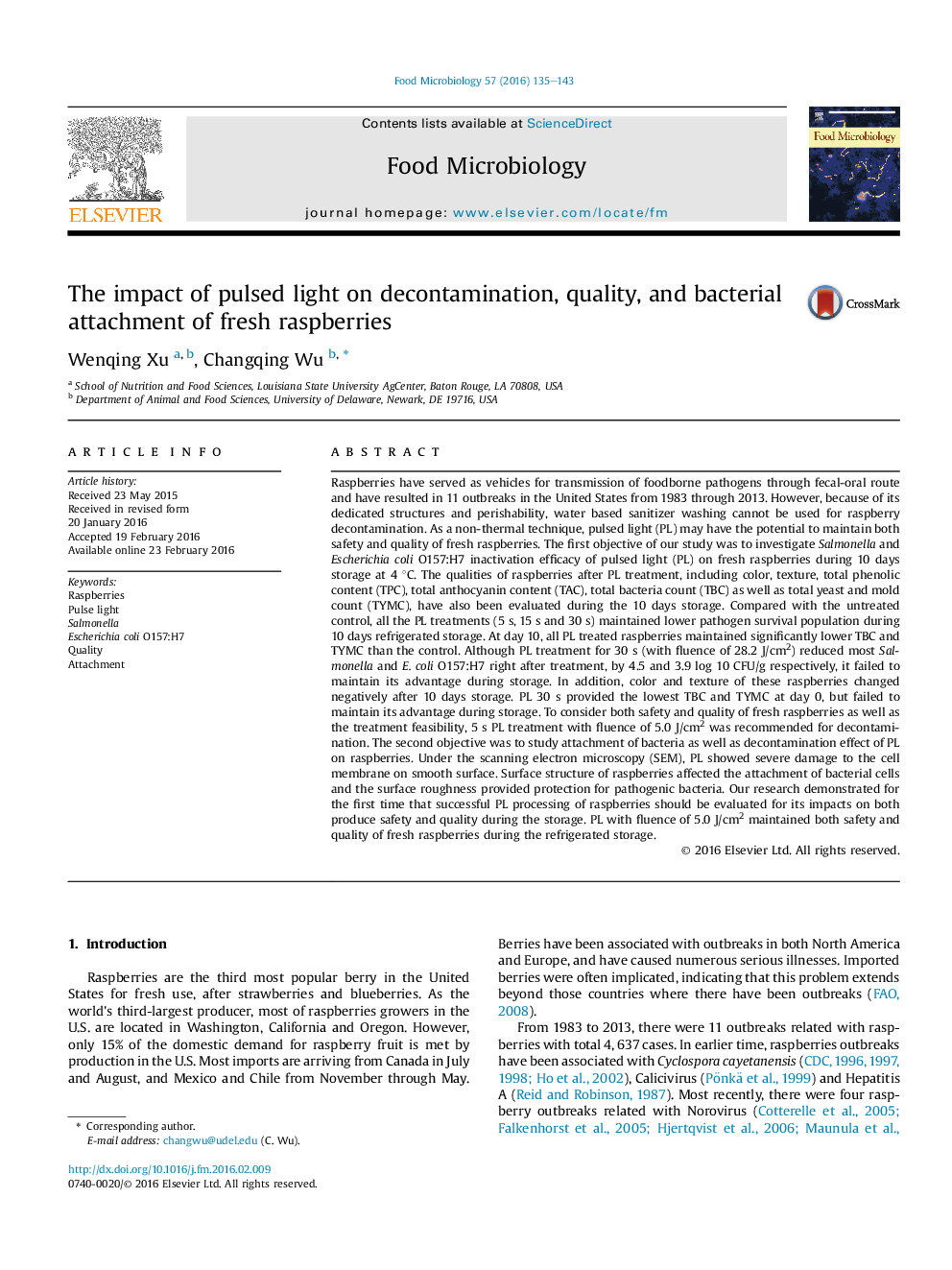| Article ID | Journal | Published Year | Pages | File Type |
|---|---|---|---|---|
| 4362610 | Food Microbiology | 2016 | 9 Pages |
•Pulsed light (PL) treatment 5s was recommended to decontaminate fresh raspberries.•PL treatment for 5s did not damage the quality of fresh raspberries during storage.•Under SEM, PL showed severe damage to the cell membrane on smooth surface.•Surface structure of raspberries affected the attachment of bacterial cells.•PL treatment could potentially be used for decontamination of fresh raspberry.
Raspberries have served as vehicles for transmission of foodborne pathogens through fecal-oral route and have resulted in 11 outbreaks in the United States from 1983 through 2013. However, because of its dedicated structures and perishability, water based sanitizer washing cannot be used for raspberry decontamination. As a non-thermal technique, pulsed light (PL) may have the potential to maintain both safety and quality of fresh raspberries. The first objective of our study was to investigate Salmonella and Escherichia coli O157:H7 inactivation efficacy of pulsed light (PL) on fresh raspberries during 10 days storage at 4 °C. The qualities of raspberries after PL treatment, including color, texture, total phenolic content (TPC), total anthocyanin content (TAC), total bacteria count (TBC) as well as total yeast and mold count (TYMC), have also been evaluated during the 10 days storage. Compared with the untreated control, all the PL treatments (5 s, 15 s and 30 s) maintained lower pathogen survival population during 10 days refrigerated storage. At day 10, all PL treated raspberries maintained significantly lower TBC and TYMC than the control. Although PL treatment for 30 s (with fluence of 28.2 J/cm2) reduced most Salmonella and E. coli O157:H7 right after treatment, by 4.5 and 3.9 log 10 CFU/g respectively, it failed to maintain its advantage during storage. In addition, color and texture of these raspberries changed negatively after 10 days storage. PL 30 s provided the lowest TBC and TYMC at day 0, but failed to maintain its advantage during storage. To consider both safety and quality of fresh raspberries as well as the treatment feasibility, 5 s PL treatment with fluence of 5.0 J/cm2 was recommended for decontamination. The second objective was to study attachment of bacteria as well as decontamination effect of PL on raspberries. Under the scanning electron microscopy (SEM), PL showed severe damage to the cell membrane on smooth surface. Surface structure of raspberries affected the attachment of bacterial cells and the surface roughness provided protection for pathogenic bacteria. Our research demonstrated for the first time that successful PL processing of raspberries should be evaluated for its impacts on both produce safety and quality during the storage. PL with fluence of 5.0 J/cm2 maintained both safety and quality of fresh raspberries during the refrigerated storage.
